Optical frequency combs are specially designed lasers that act like rulers to accurately and rapidly measure specific frequencies of light. They can be used to detect and identify chemicals and pollutants with extremely high precision.
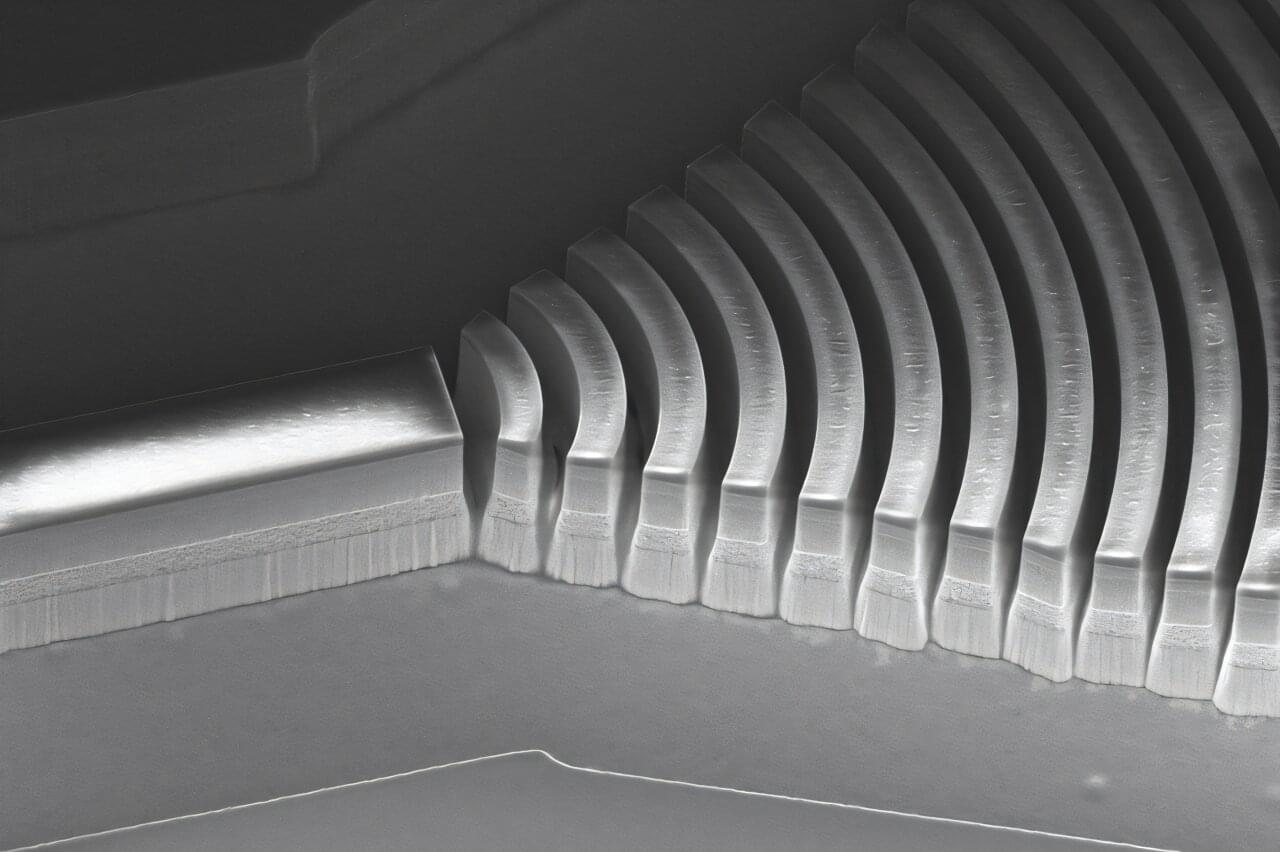

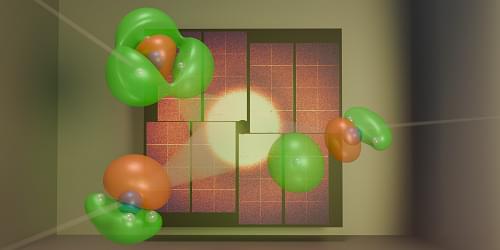
Scientists have used ultrashort x-ray pulses to directly observe the motion of electrons driving a chemical reaction.
A chemical reaction occurs when chemical bonds break and new ones form. These bonds hold atoms together within molecules and are governed by the atoms’ outermost electrons. The motion of these so-called valence electrons dictates how a reaction starts and determines its final products. For decades, chemists have envisioned the possibility of watching such electron movement in real time, capturing a movie of valence electrons as bonds break and form. Now Ian Gabalski at Stanford University and his colleagues have brought this dream closer to reality [1]. They have observed valence-electron motion occurring within a few hundred femtoseconds—where one femtosecond is a millionth of a billionth of a second. This feat was accomplished using ultrashort, high-energy x-ray pulses produced at SLAC National Accelerator Laboratory in California. The team’s findings provide an intuitive view of how electron dynamics influence chemical reactions.
Directly observing electron motion during chemical reactions presents two main challenges. First, it requires an imaging technique that can map the spatial distribution of electrons, known as the electron density. This distribution spans only a few tenths of a nanometer, demanding extremely high spatial resolution. Second, the task needs ultrahigh temporal resolution, because electron movement occurs on a timescale of femtoseconds or even attoseconds—thousandths of a femtosecond. Capturing such rapid motion requires the sample to be subjected to light pulses that are short enough to effectively freeze electron dynamics in time, similarly to using a high-speed camera to capture the fluttering wings of a hummingbird.
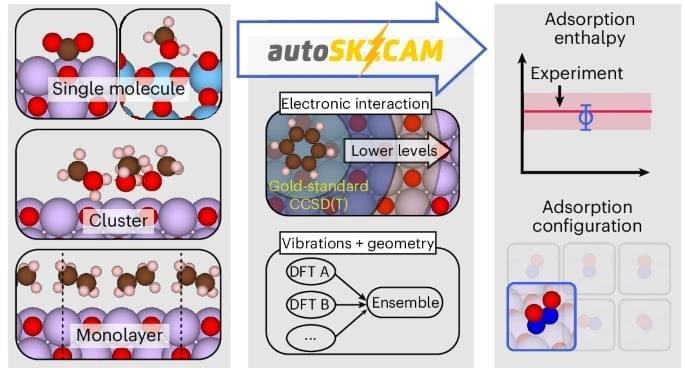
Understanding and predicting chemical reactions on surfaces lies at the heart of modern materials science. From heterogeneous catalysis to energy storage and greenhouse gas sequestration, surface chemistry defines the efficiency and viability of advanced technologies. Yet, computationally modeling these processes with both accuracy and efficiency has been a grand challenge.
A recent study published in Nature Chemistry introduces a breakthrough: the autoSKZCAM framework, an automated and open-source method that applies correlated wavefunction theory (cWFT) to surfaces of ionic materials at costs comparable to density functional theory (DFT). This achievement not only bridges the accuracy gap but also enables routine, large-scale studies of surface processes with chemical accuracy.
It’s a rare win for the turning-lead-into-gold crowd.
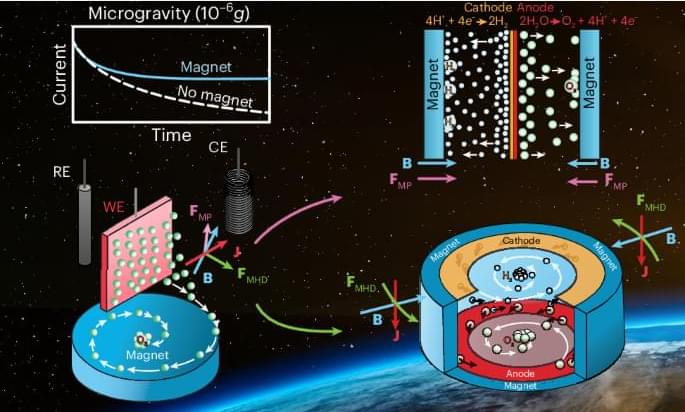
Electrochemical devices producing oxygen in space face limited buoyancy, hindering gas bubble removal and increasing reaction overpotentials. Now, it has been shown that commercial magnets can enhance the reaction efficiency and induce phase separation in microgravity. The optimized magnetoelectrochemical architectures developed here may guide the designs of future life-support systems.
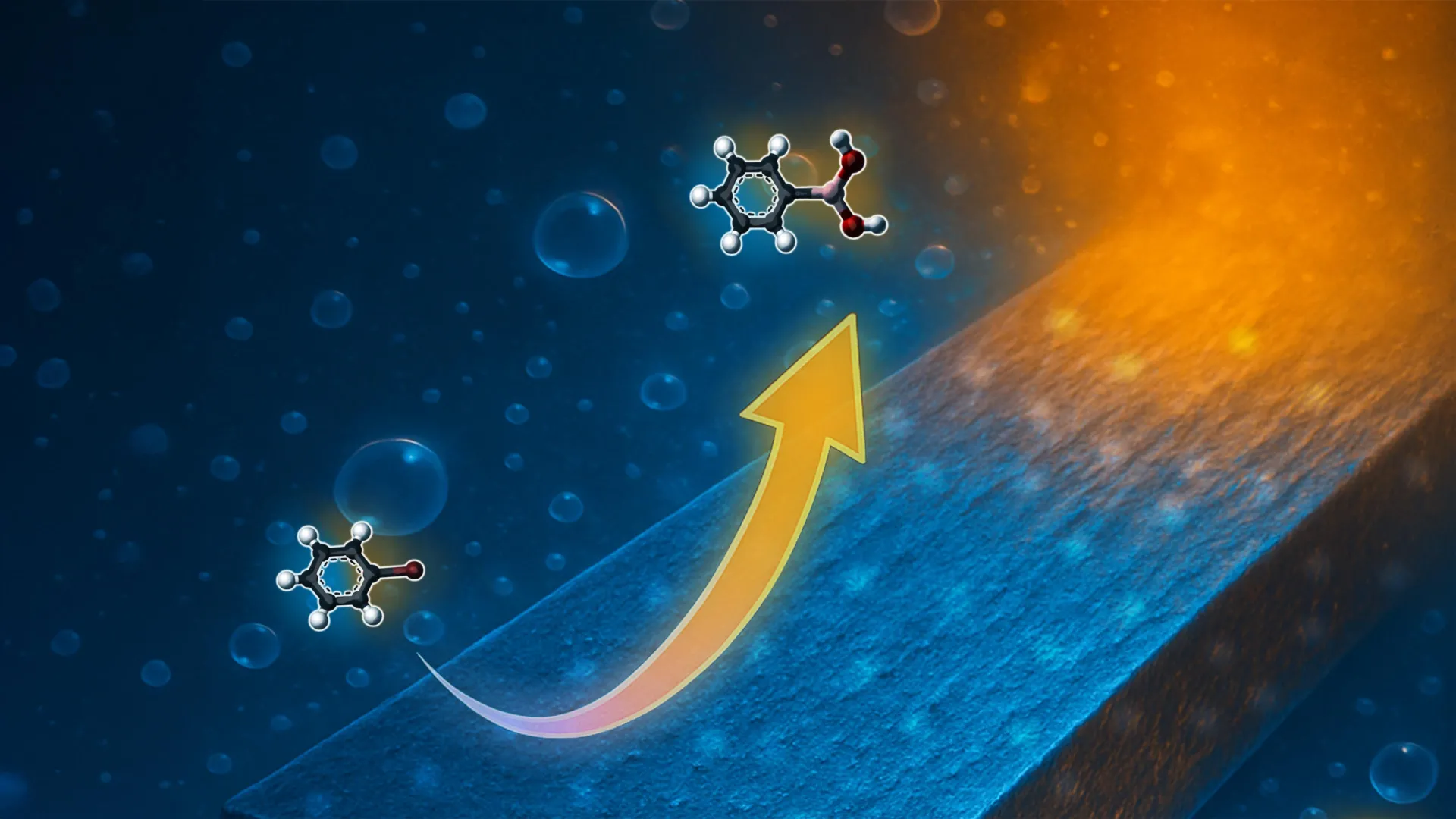

Mitsui & Co. has formally launched a new quantum-enabled chemistry platform, QIDO, in collaboration with U.S.-based Quantinuum and QSimulate. The system, designed to accelerate the discovery of new materials and pharmaceuticals, blends classical and quantum computing resources to streamline complex chemical calculation, according to a story in Nikkei and a Quantinuum blog post.
Quantum computers hold promise for modeling chemical reactions beyond the reach of traditional supercomputers. But fully fault-tolerant systems remain years away, leaving companies searching for ways to extract value from today’s noisy, early-stage machines. QIDO, short for Quantum-Integrated Discovery Orchestrator, attempts to bridge that gap.
The platform runs most computations on powerful classical hardware while sending only the most computationally expensive steps — such as the modeling of strongly correlated electrons — to a quantum computer. This hybrid workflow allows companies to perform higher-precision chemical simulations today, without waiting for fully mature quantum systems, Nikkei reports.

You may not be aware that most of the medicines that have been approved for treatment are rooted in nature.
For example, the bark of willow trees has been called nature’s aspirin because it contains a chemical called salicin. The human body converts salicin into salicylic acid, which relieves pain and fights fevers.
New research by William Chain, associate professor in the University of Delaware’s Department of Chemistry and Biochemistry, and his lab, uses a molecule found in a tropical fruit to offer hope in the fight against liver-related cancers, one of the world’s top causes of cancer deaths.
Chemistry breakthrough provides pathway to low cost treatments.
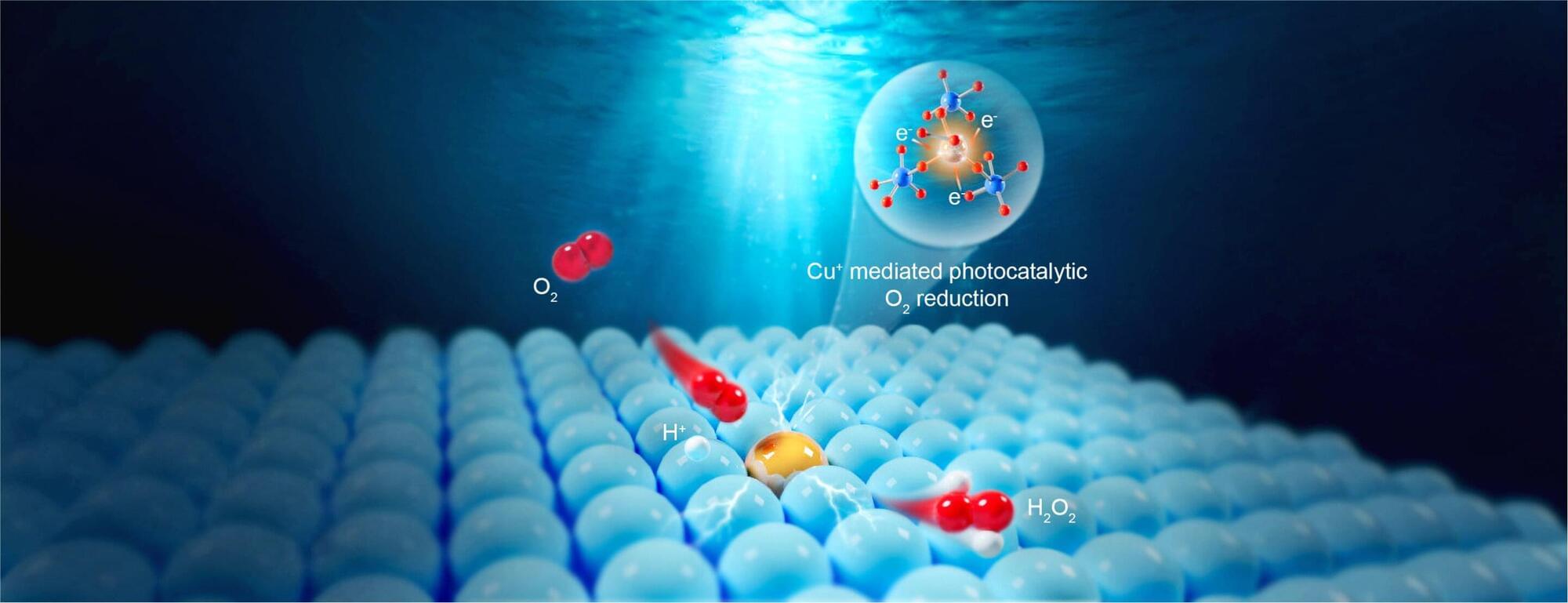
Hydrogen peroxide (H2O2) packs so much chemical energy into a small space that it is powerful enough to fuel rockets. But this same ability to concentrate energy also makes hydrogen peroxide useful for more earthly energy applications, such as powering fuel cells. It also holds promise as a green and sustainable energy source: when hydrogen peroxide releases its stored energy, the main byproduct is simply water.
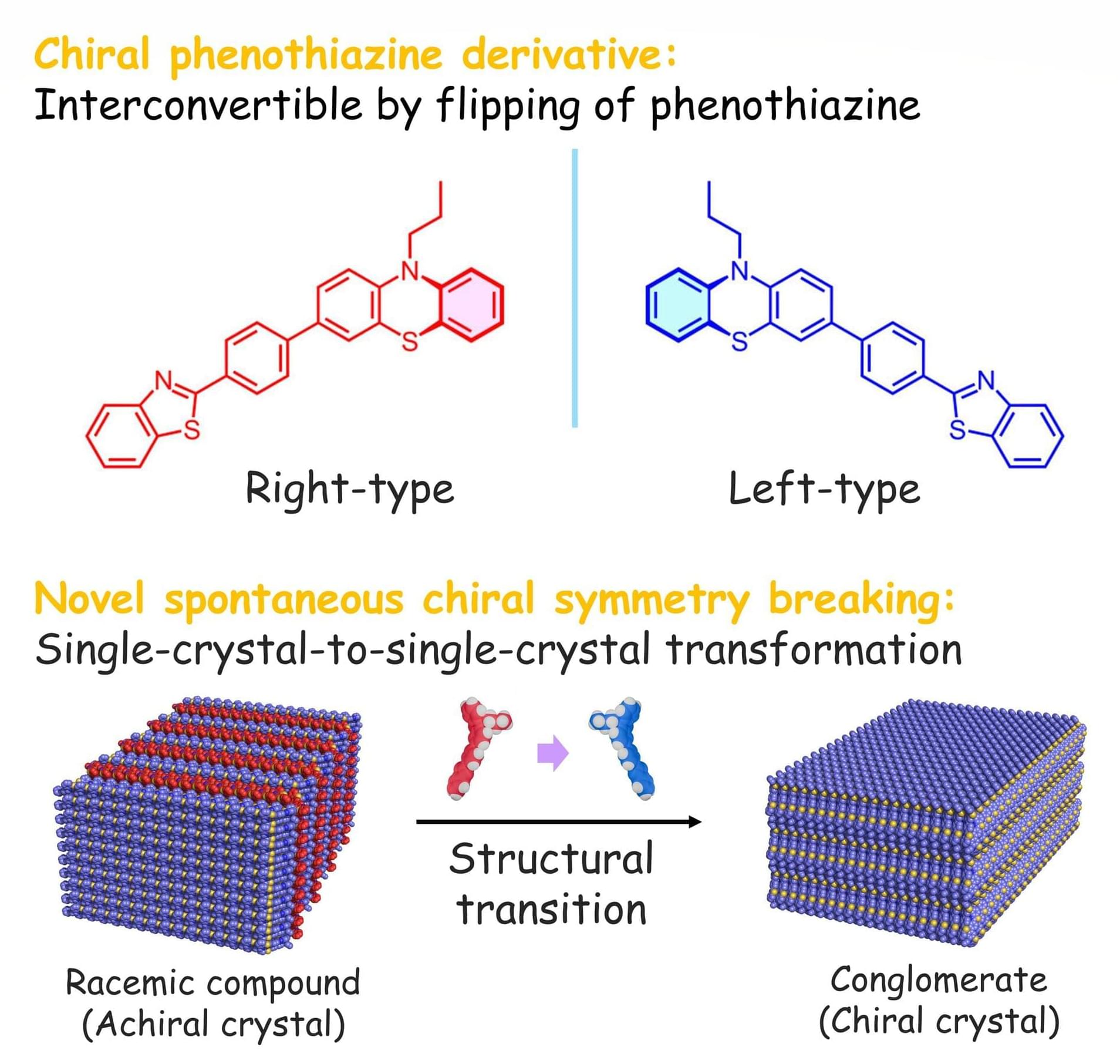
Researchers at The University of Osaka have discovered a new type of chiral symmetry breaking (CSB) in an organic crystalline compound.
This phenomenon, involving a solid-state structural transition from an achiral to a chiral crystal, represents a significant advance in our understanding of chirality and offers a simplified model to study the origin of homochirality. This transformation also activates circularly polarized luminescence, enabling new optical materials with tunable light properties.
The work has been published in Chemical Science.